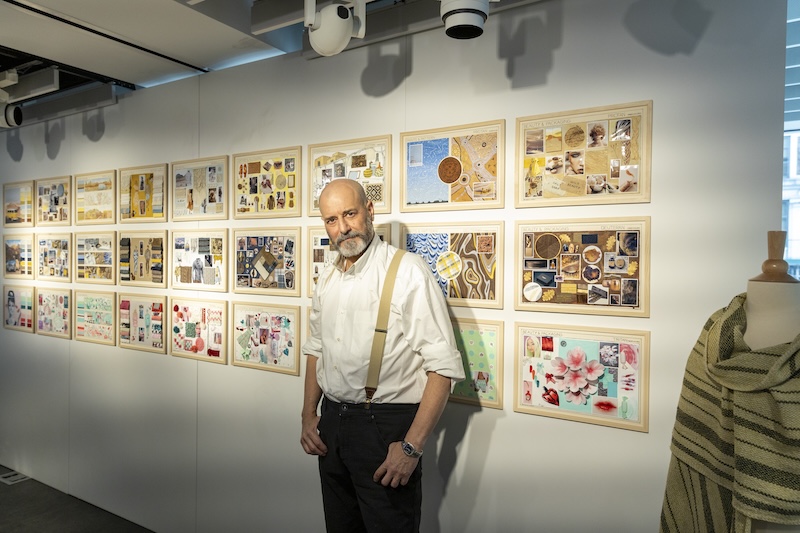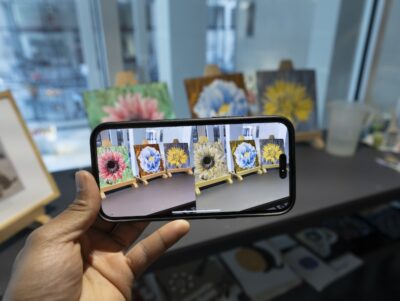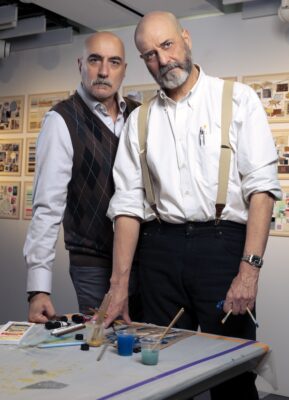
An estimated 300 million people in the world are colorblind, but according to Italian artist Fabrizio Tiribilli, an expert in design for colorblindness, no one is creating colorblind-friendly designs.

“There is nothing for colorblind people, no toys, no maps,” says Tiribilli, who is not colorblind himself. “Everyone knows colorblindness exists, but no one cares.”
The week of Feb. 12, Tiribilli guest-taught 13 classes at FIT in Fashion Design, Footwear and Accessories Design, Photography and Related Media, and more. Students downloaded an app called Chromatic Vision Simulator, which shows how the world looks to people with different types of colorblindness. The students then used a limited palette to draw and paint artworks that would be fully visible to colorblind people.
Tiribilli also gave a lecture about his Colorblindness Creativity Project and participated in a symposium, called The Language of Color, in partnership with the department of Modern Languages and Cultures, about the arbitrary relationship between the names of colors and the hues themselves.

His mission to create art and design that colorblind people can see began in 2018. He received an Instagram message from one of his models, a deeply colorblind man named Marco Tonucci, asking for help seeing as others do.
Tiribilli researched colorblindness and developed a beautiful color palette that avoids red and green, which most colorblind people see as brown. “The important thing was not to design just for them,” he says. “The goal is to create something that works for everyone.”
Ron Amato, professor of Photography and Related Media, organized the residency, with assistance from Exhibition Coordinator Lobsang Tsewang and support from Troy Richards, dean of the School of Art and Design.
Amato met Tiribilli in 2023 through Tonucci, whom Amato had photographed while leading a study-abroad trip in Italy. “I knew immediately that this project was incredible,” Amato recalls. “I don’t think we ever talk about colorblindness as artists. We go about making our work not really considering it.”
